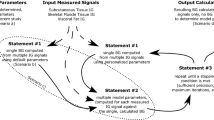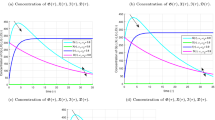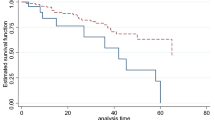Abstract
RECENT reports have stressed the advantages of using highly specific ‘glucose oxidase’ methods for the clinical determinations of blood sugars1–3. Traditional methods, such as those of Folin and Wu, measure the total reducing capacity of the blood, and include the so-called saccharoid fraction as well as the true glucose-level. The exact nature of this fraction, and its significance in pathological conditions, is not yet fully understood.
This is a preview of subscription content, access via your institution
Access options
Subscribe to this journal
Receive 51 print issues and online access
$199.00 per year
only $3.90 per issue
Buy this article
- Purchase on SpringerLink
- Instant access to full article PDF
Prices may be subject to local taxes which are calculated during checkout
Similar content being viewed by others
References
Saifer, A., and Gerstenfeld, S. J., J. Lab. Clin. Med., 51, 448 (1958).
Marks, V., Clin. Chim. Acta, 4, 395 (1959).
Middleton, J. E., Brit. Med. J., i, 824 (1959).
Hernandez, T., and Coulson, R. A., Biochem. J., 79, 596 (1961).
Author information
Authors and Affiliations
Rights and permissions
About this article
Cite this article
GRAYMORE, C., TOWLSON, M. Variations in the Blood Saccharoid Fraction in Diabetes. Nature 195, 76 (1962). https://doi.org/10.1038/195076a0
Issue date:
DOI: https://doi.org/10.1038/195076a0
This article is cited by
-
Variation of Saccharoid Fraction in Diabetes Mellitus
Nature (1967)



